The Metaphysical Tapestry: The Great Architect, Demiurge, and the Conception of Divine in different Worldviews.
Across diverse cultural and religious perspectives, the conceptualisation of the Divine, particularly in the context of the grand engineer or architect of the cosmos, is an intriguing deliberation (Hill, 1987).
With its roots deeply planted in various religious frameworks and philosophical thoughts, the conceptualisation of this Divine force provides a kaleidoscopic perspective on the essence, persona, and name accorded to the Supreme Deity.
The cornerstone of Christian theology, underpinned by the varied convictions held by its adherents, is the belief in a supreme Creator called God.
This belief is cross-pollinated into Freemasonry where the term “Divine” is employed inclusively and impartially to speak about the supreme deity (Anderson, 1723).
The concept of the Great Architect of the universe, first mentioned in Reverend James Anderson’s book of constitutions, later adopted by a calvinist minister, allows practitioners from various religious backgrounds to converge under a common divine symbol—an inclusive metaphor for the Supreme universal power (Haffner, 1989).
In Hindu scriptures, instances of such a divine architect can be observed in the character of Vishwa Karma, often associated with Perusia, the founder of the Vedic religion, and Brahman (Klostermaier, 2010).
Concurrently, theologians and Christian apologists like Thomas Aquinas, John Calvin, and James Hopwood examine this concept of the Universal Architect through a monotheistic lens seeking its application even to scientific explanations.
Stepping into the contours of Gnostic theology, the script flips as the God of the Old Testament, referred to as the demiurge, deviates from being the ultimate source to a product of creation (Filoramo, 1990).
Alternative takes on the push and pull of creative forces come into play, with Christ and Sophia becoming messengers of the true Transcendent God. The symbolism of the great architect in Gnostic theology becomes emblematic of the inherent divine potential harboured within every individual.

IMAGE: the square magazine digital collection
The concept of the demiurge itself is brimming with philosophical intricacies. Plato initially introduced the demiurge as a benign being in charge of assembling the physical universe, emulating an ideal cosmos teeming with life and demi-gods (Plato, 360 BC). Subsequently, Neoplatonic thought led by Plotinus and others, bridged Aristotle’s theory of inertia and Plato’s demiurge by presenting the latter as an uncreated secondary cause(lamus, 1992).
Gnosticism contributed an additional layer of complexity by drawing a distinguishing line between the lesser Creator (demiurge) and the Supreme Being. The paradox of a Divine being depicted as flawed and often opposed to the Good is a characteristic motif in Gnostic sects (Hoeller, 1989).
In the tapestry of angelic beings, early Gnostic sects often contributed the act of creation to angels, drawing inspiration from Genesis.
A chief angel named Yalo has been credited with constructively and destructively influencing the fate of the Jewish people, leading them out of Egypt and subjecting them to various punitive actions (Wolfson, 2005).
Marion of Cop, an early Christian writer, drew a theological distinction between the demiurge, a just deity and the ruling God of this world, and the higher loving Good God of the New Testament.
The implications of such a belief highlight the dynamic interplay between faith, spiritual alignment, and divine justice.
Christian Dualist Movements like Catharism (12th – 14th Century) inherited the belief that an evil world was created by Satan from Gnosticism – a testament to the intellectual cross-pollination of theological ideas (Moore, 2006).
The relationship between the demiurge and the devil too is multifaceted and varies amongst Christian sects, adding yet another thread to the intricate philosophical weave of the Divine.
In conclusion, the idea of the Great Architect of the Universe or the Divine is a multifaceted and comprehensive concept that is affected by contextual factors such as culture, religion, and philosophical vantage points.
The intricate examination of these diverse spiritual, philosophical, and theological deliberations illustrate the dynamic perception of the demiurge and other divine constructions.
It underscores the significance of evolving divine symbology in comprehending the dialogic relationship between the material and spiritual worlds.
Acknowledging the richness and depth of these conceptualisations brings to light the essence of human spirituality and the power of metaphysical narratives in forging our tangible and intangible realities.
The cornerstone of Christian theology, underpinned by the varied convictions held by its adherents, is the belief in a supreme Creator called God (Plantinga, 2011). This belief is cross-pollinated into Freemasonry where the term “Divine” is employed inclusively and impartially to speak about the supreme deity (Anderson, 1723).
The concept of the Great Architect of the universe, first mentioned in Reverend James Anderson’s book of constitutions, later adopted by a calvinist minister, allows practitioners from various religious backgrounds to converge under a common divine symbol—an inclusive metaphor for the Supreme universal power (Haffner, 1989).

IMAGE: the square magazine digital collection
In Hindu scriptures, instances of such a divine architect can be observed in the character of Vishwa Karma, often associated with Perusia, the founder of the Vedic religion, and Brahman (Klostermaier, 2010).
Concurrently, theologians and Christian apologists like Thomas Aquinas, John Calvin, and James Hopwood (Wayne, 2013) examine this concept of the Universal Architect through a monotheistic lens seeking its application even to scientific explanations.
Stepping into the contours of Gnostic theology, the script flips as the God of the Old Testament, referred to as the demiurge, deviates from being the ultimate source to a product of creation (Filoramo, 1990).
Alternative takes on the push and pull of creative forces come into play, with Christ and Sophia becoming messengers of the true Transcendent God. The symbolism of the great architect in Gnostic theology becomes emblematic of the inherent divine potential harboured within every individual.
The concept of the demiurge itself is brimming with philosophical intricacies. Plato initially introduced the demiurge as a benign being in charge of assembling the physical universe, emulating an ideal cosmos teeming with life and demi-gods (Plato, 360 BC).
Subsequently, Neoplatonic thought led by Plotinus and others, bridged Aristotle’s theory of inertia and Plato’s demiurge by presenting the latter as an uncreated secondary cause(lamus, 1992).
Gnosticism contributed an additional layer of complexity by drawing a distinguishing line between the lesser Creator (demiurge) and the Supreme Being. The paradox of a Divine being depicted as flawed and often opposed to the Good is a characteristic motif in Gnostic sects (Hoeller, 1989).
In the tapestry of angelic beings, early Gnostic sects often contributed the act of creation to angels, drawing inspiration from Genesis. constructively and destructively influencing the fate of the Jewish people, leading them out of Egypt and subjecting them to various punitive actions (Wolfson, 2005).
Marion of Cop, an early Christian writer, drew a theological distinction between the demiurge, a just deity and the ruling God of this world, and the higher loving Good God of the New Testament.
The implications of such a belief highlight the dynamic interplay between faith, spiritual alignment, and divine justice (Leadbetter, 2009).
Christian Dualist Movements like Catharism (12th – 14th Century) inherited the belief that an evil world was created by Satan from Gnosticism – a testament to the intellectual cross-pollination of theological ideas (Moore, 2006).
The relationship between the demiurge and the devil too is multifaceted and varies amongst Christian sects, adding yet another thread to the intricate philosophical weave of the Divine (Woods, 2008).
In conclusion, the idea of the Great Architect of the Universe or the Divine is a multifaceted and comprehensive concept that is affected by contextual factors such as culture, religion, and philosophical vantage points (Saliba, 2007).
Footnotes
References
– Anderson, James. The Constitutions of the Free-Masons. London, England, 1723.
– Filoramo, Giovanni. A History of Gnosticism. Oxford, UK: Blackwell, 1990.
– Haffner, Paul. Mystery of Creation. London, England: Gracewing, 1989.
– Hill, Robert. “The gods of the Greeks and Romans”, in Mircea Eliade (ed.), Encyclopedia of Religion. New York, NY: Macmillan, 1987.
– Hoeller, Stephan A. Gnosticism: New Light on the Ancient Tradition of Inner Knowing. Wheaton, IL: Quest Books, 2002.
– Klostermaier, Klaus K. A Survey of Hinduism, 3rd Edition. Suny Series. Albany, NY: State University of New York Press, 2010.
– Leadbetter, Bill. “Marcellina”, in Richard E. Witcombe (ed.), Women in the Ancient World. Charlottesville, VA: University of Virginia, 2009.
– Moore, R. I. The War on Heresy. London, England: Profile Books, 2006.
– Plantinga, Alvin. Where the Conflict Really Lies: Science, Religion, and Naturalism. Oxford, England: Oxford University Press, 2011.
– Saliba, John A. Understanding New Religious Movements. Altamira Press, 2003.
– Wayne, John. The Just Church: Becoming a Risk-Taking, Justice-Seeking, Disciple-Making Congregation. Tyndale House Publishers, Inc., 2013.
– Wolfson, Elliot R. “Seven Sermons to the Dead Written by Basilides in Alexandria, the City Where East and West Meet”, in Stephen Skinner (ed.), Alexandria, The Journal of Western Cosmological Traditions, Volume Two (2). number 2, 1995.
– Woods, Richard. “The demiurge”, in Mircea Eliade (ed.), The Encyclopedia of Religion. New York, NY: Macmillan, 1987.
Article by: Antonio Biella

Antonio (Tony) was initiated into the Brotherhood of Aberhonddu lodge 8588 (Brecon) in 1998. (UGLE)
Now a practicing member of the Afon dar lodge 8829 in Aberdare. He also a member of Rose Croix, a Mark Master Mason, a companion in Royal Arch Chapter and a member in Knights Templar.
Recent Articles: Esoteric Masonry
 Explore the multifaceted concept of the Divine across various cultural and religious perspectives. Delve into the intriguing deliberations on the Great Architect, Demiurge, and their roles in shaping our understanding of the cosmos, blending philosophical, theological, and metaphysical insights into a rich tapestry of human spirituality. |
 Unveiling the Mysteries: Explore the Enigmatic World of Rosicrucianism! Dive into the fascinating origins and teachings of the Rosicrucian tradition, shaped by the mythical figure Christian Rosenkreuz. Discover the secrets of alchemy, spiritual transformation, and esoteric knowledge. Unlock the hidden wisdom that has captivated seekers for centuries. Unleash your inner mystic today! |
 An Esoteric Interpretation of the Holy Royal Arch Delving into the profound mysteries of the Holy Royal Arch, Matt DA Fletcher offers an esoteric interpretation that challenges the conventional understanding of Freemasonry. While Craft Masonry is clear in its teachings, the Royal Arch remains an enigma for many. Fletcher's exploration uncovers the symbolic and philosophical depths of this degree, revealing its significance in the Mason's journey towards reintegration with the Creator. |
 Stoicism, Freemasonry, and the Modern Man Discover how the ancient wisdom of Stoicism can enrich Freemasonry and modern life. Dr. Chacón-Lozsán Francisco M.˙.M.˙. explores Stoic principles like virtue, resilience, and inner peace, offering practical insights for today's challenges. Learn how these timeless teachings can foster personal growth, ethical conduct, and emotional stability. |
 Explore the evolution of Masonic rites with the Universal Rite, a modern adaptation of the Ancient and Accepted Scottish Rite. Discover how it integrates contemporary principles, promotes intercultural dialogue, and ensures the timeless values of Freemasonry remain relevant in today's world. |
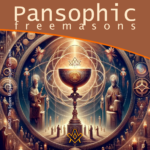 Unveil the secrets of Pansophic Freemasonry, a transformative journey through the ancient mystical traditions. Delve into the sacred realms of Rosicrucianism, Templar wisdom, Kabbalah, Gnosticism, and more. Discover the Graal, the sacred Grail that connects all esoteric paths. Embrace a holistic spiritual quest that reveals the profound mysteries of self and the universe. |
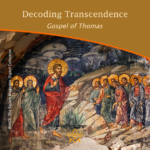 Dive into a spiritual journey where self-awareness is the key to enlightenment. The Gospel of Thomas and Masonic teachings converge on the profound truth that the path to transcendent wisdom lies within us. Embrace a diversified understanding of spirituality, emphasizing introspection as the gateway to a universally respected enlightenment. Explore, understand, transcend. |
 Philosophy the Science of Estimating Values Philosophy is the science of estimating values. The superiority of any state or substance over another is determined by philosophy. By assigning a position of primary importance to what remains when all that is secondary has been removed, philosophy thus becomes the true index of priority or emphasis in the realm of speculative thought. The mission of philosophy a priori is to establish the relation of manifested things to their invisible ultimate cause or nature. |
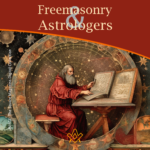 Unlocking the Mysteries: The Surprising Connection Between Freemasonry and Astrologers Revealed! Delve into the intriguing world of Freemasonry and explore its ties to astrological practices. Discover how these two distinct realms intersect, offering a fascinating glimpse into the esoteric interests of some Freemasons. Uncover the hidden links and unravel the enigmatic bond between Freemasonry and astrologers! |
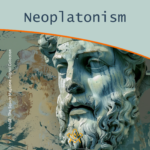 Neoplatonism, a philosophy with profound influence from the 3rd to the 6th century, merges Platonic ideals with Eastern thought, shaping Western and Middle-Eastern philosophy for two millennia. It emphasizes the unity of the individual with the supreme 'One', blending philosophy with theology and impacting major religious and philosophical movements, including Christianity and Islam. |
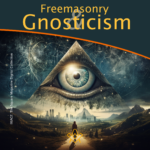 The enigmatic allure of Freemasonry's ancient rituals and Gnosticism's search for hidden knowledge capture the human spirit's endless quest for enlightenment. Between the stonemason's square and the Gnostic's divine spark lies a tantalizing intersection of philosophy, spirituality, and the pursuit of esoteric wisdom. Both traditions beckon with the promise of deeper understanding and moral elevation, inviting those who are drawn to unravel the tapestries of symbols and allegories. Whether through the fellowship of the lodge or the introspective journey of the soul, the paths of Freemasonry and Gnosticism represent a yearning to connect with something greater than ourselves—an impulse as old as time and as compelling as the mysteries they guard. |
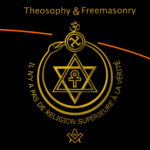 Embark on a journey through time and spirituality with our in-depth exploration of the Theosophical Society's Seal. This ancient emblem, rich with symbols, bridges humanity with the cosmos, echoing through the world's great faiths and diverse cultures. Our paper delves into the six mystical symbols, untangling their profound meanings and tracing their presence in historic art worldwide. Unaffiliated with worldly movements, these symbols open a window to esoteric wisdom. We also probe potential parallels with Freemasonry, seeking threads that might connect these storied organizations. Join us in unveiling the universal language of the spirit encoded within this enigmatic Seal. |
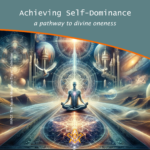 Discover the pathway to divine oneness through the concept of self-dominance. This thought-provoking essay explores the profound connection between self-control, spiritual growth, and achieving unity with the divine essence. With an interdisciplinary approach, it offers practical steps towards expanding consciousness and deepening our understanding of the divine. |
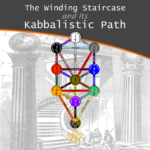 The Winding Staircase and its Kabbalistic Path The Winding Staircase in freemasonry is a renowned symbol of enlightenment. In this article, we explore its connection to Kabbalistic thought and how it mirrors the inner growth of a candidate as he progresses throughout his Masonic journey. From faith and discipline in Binah, to strength and discernment in Geburah, and finally to victory and emotional intuition in Netzach, each step represents a crucial aspect of personal development. Join us as we delve into the esoteric meanings of this powerful symbol. |
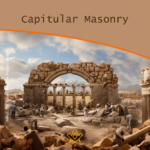 Unravel the mystic origins of Capitular Masonry, a secretive Freemasonry branch. Explore its evolution, symbolic degrees, and the Royal Arch's mysteries. Discover the Keystone's significance in this enlightening journey through Masonic wisdom, culminating in the ethereal Holy Royal Arch. |
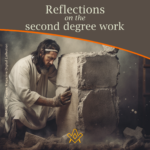 Reflections on the Second Degree Work Bro. Draško Miletić offers his reflections on his Second Degree Work – using metaphor, allegory and symbolism to understand the challenges we face as a Fellow Craft Mason to perfect the rough ashlar. |
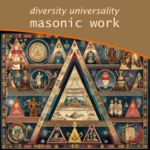 Diversity and Universality of Masonic Work Explore the rich tapestry of Masonic work, a testament to diversity and universality. Uncover its evolution through the 18th century, from the stabilization of Symbolic Freemasonry to the advent of Scottish rite and the birth of Great Continental Rites. Dive into this fascinating journey of Masonic systems, a unique blend of tradition and innovation. Antonio Jorge explores the diversity and universality of Masonic Work |
 Nonsense as a Factor in Soul Growth Although written 100 years ago, this article on retaining humour as a means of self-development and soul growth is as pertinent today as it was then! Let us remember the words of an ancient philosopher who said, when referring to the court jester of a king, “It takes the brightest man in all the land to make the greatest fool.” |
 Freemasonry: The Robe of Blue and Gold Three Fates weave this living garment and man himself is the creator of his fates. The triple thread of thought, action, and desire binds him when he enters into the sacred place or seeks admittance to the Lodge, but later this same cord is woven into the wedding garment whose purified folds shroud the sacred spark of his being. - Manly P Hall |
 By such a prudent and well regulated course of discipline as may best conduce to the preservation of your corporal and metal faculties in the fullest energy, thereby enabling you to exercise those talents wherewith god has blessed you to his glory and the welfare of your fellow creatures. |
 Jacob Ernst's 1870 treatise on the Philosophy of Freemasonry - The theory of Freemasonry is based upon the practice of virtuous principles, inculcating the highest standard of moral excellence. |
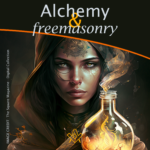 Alchemy, like Freemasonry, has two aspects, material and spiritual; the lower aspect being looked upon by initiates as symbolic of the higher. “Gold” is used as a symbol of perfection and the earlier traces of Alchemy are philosophical. A Lecture read before the Albert Edward Rose Croix Chapter No. 87 in 1949. by Ill. Bro. S. H. Perry 32° |
 The spirit of the Renaissance is long gone and today's globalized and hesitant man, no matter ideology and confession, is the one that is deprived of resoluteness, of decision making, the one whose opinion doesn't matter. Article by Draško Miletić, |
 A Mason's Work in the First Degree Every Mason's experiences are unique - here writer and artist Draško Miletić shares insights from his First Degree Work. |
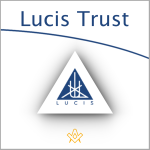 Initiation and the Lucis Trust The approach of the Lucis Trust to initiation may differ slightly to other Western Esoteric systems and Freemasonry, but the foundation of training for the neophyte to build good moral character and act in useful service to humanity is universal. |
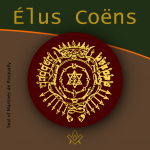 Who were the mysterious 18th century Élus Coëns – a.k.a The Order of Knight-Masons Elect Priests of the Universe – and why did they influence so many other esoteric and para-Masonic Orders? |
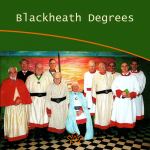 Bro. Chris Hatton gives us his personal reflections on the history of the 'house at Blackheath and the Blackheath Orders', in this wonderful tribute to Andrew Stephenson, a remarkable man and Mason. |
 Book Review - Cagliostro the Unknown Master The book review of the Cagliostro the Unknown Master, by the Editor of the book |
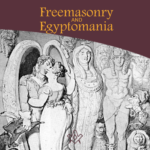 We explore fascinating and somewhat contentious historical interpretations that Freemasonry originated in ancient Egypt. |
 Is Freemasonry esoteric? Yes, no, maybe! |
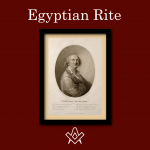 Egyptian Freemasonry, founder Cagliostro was famed throughout eighteenth century Europe for his reputation as a healer and alchemist |
masonic knowledge
to be a better citizen of the world
share the square with two brothers

click image to open email app on mobile device






